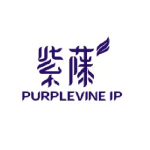On June 10 2022, the Shanghai Stock Exchange officially released and implemented the ‘Guidelines of the Shanghai Stock Exchange for the Application of the Rules for Issuance and Listing Review on the STAR Market No. 7 - Medical Device Companies under the Fifth Set of Listing Standards’ (hereafter referred to as the Guidelines).
The Guidelines intend to fully support the listing of medical device companies that have not yet generated a certain level of income but have “key and core technology”. At the same time, this should actively encourage medical device companies to develop and innovate core technologies and products.
According to the Guidelines, core technologies are those that fall within the scope encouraged and supported by the national medical device sci-tech innovation strategy and relevant industrial policies. These include equipment and its key components, parts, accessories, and basic materials in the areas of advanced inspection and testing, diagnosis, treatment, monitoring, life support, Traditional Chinese Medicine (TCM) diagnosis and treatment, implantation and intervention, and rehabilitation.
Based on previous practice as well as the developments of sci-tech innovation and the regulatory requirements in the medical devices industry, the Guidelines detailed rules for medical device companies while applying for listing on the STAR Market. These include:
The scope of the products with core technology;
Initial success;
Market share;
Technological advantages;
Business sustainability; and
Information disclosure.
Among them, Article 6 of the Guidelines is closely related to IP rights, and so we will analyse this Article in detail.
Article 6
The Guidelines state that the applicants should possess obvious technological advantages. The applicants should disclose whether they have obvious technological advantages in terms of the following aspects:
The corresponding relationship between the core technologies and core products;
The method of core technology acquisition;
The development of core technology;
Indicators measuring the advancement of the core technology;
The competition between domestic and foreign medical device companies;
The technical reserves and continuous research and development (R&D) capabilities; and
Information about the applicants, such as their education background, their R&D achievements, the time at which they joined the company, and the stable retention rate of the core team.
Obvious technical advantages
Article 6 focuses as a priority on “obvious technical advantages”; that is, whether the applicant’s technology is advanced compared with its competitors. The possible obvious technical advantages can be categorised as below:
1. Corresponding relationship between core technologies and core products
During the listing review of the STAR Market, the applicants should prove that they own the core technologies. This can be backed up by invention patent applications. At the same time, in the examination of the relationship between the core technologies and the core products, the applicants should also be the invention patent holder of the core products.
2. Method of core technology acquisition
The acquisition of core technology refers to how the applicant acquires the core patent, for example, through independent R&D or a transfer. In general, if the core patent is acquired through independent R&D, it demonstrates the R&D capabilities and the sci-tech attributes of the applicant.
3. Development of core technology and indicators measuring the core technology advancement
The advancement of core technology is examined through the disclosure of core technology development and relevant quantitative data. The quantitative indicators generally include the number of invention patents related to the core technology development and main business income.
4. Comparison with domestic and foreign competitors
Rather than solely considering the quantitative data of the applicant, comparing the applicant’s reputation and non-quantitative information with its competitors can better reflect the applicant’s position in the market.
5. Technical reserves and continuous R&D capabilities
Unlike with the previous four sets of listing standards, the Guidelines do not impose any rigid requirements on the applicant’s revenue. Therefore, the Guidelines will be a preferable choice for small start-ups with key and core technology. Although revenue is not a priority of the listing review, the continued growth and profitability of the business – in other words, future revenue – may be reviewed.
6. The educational background, R&D achievements, time at which the applicant joined the company, and stable retention rate of the core team
Given that there is a close connection between the technology and the core team, the indicators measuring the personnel of the core team reflect, to a great extent, the continuous R&D capabilities of the applicant.
Final thoughts
The precise guidance of Article 6 of the Guidelines in identifying “obvious technical advantages” of medical device companies helps to screen promising medical device start-ups.
Moreover, Article 2 of the Guidelines stipulates the eligibility of applicants which covers almost all aspects of the medical device field, demonstrating the Chinese government’s strong support for medical device companies.
Therefore, medical device companies are advised to pay close attention to examples successfully listed according to the Guidelines’ definitions, as these Chinese companies may grow into formidable competitors in the future.












